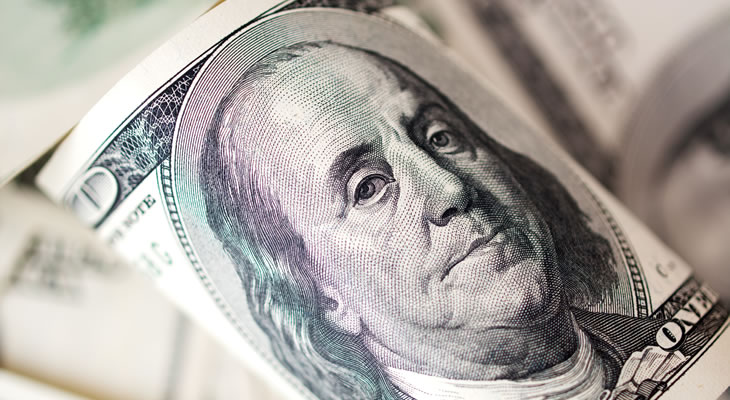GBP/USD Conversion Rate Predicted to Dive as Traders Project Long-Term BoE Rate Hike Delays
The Pound Sterling to US Dollar (GBP/USD) exchange rate declined by around -0.6% on Thursday afternoon.
Despite the fact that today’s only British economic data publication met with the market consensus, the Pound softened across the board during Thursday’s European session.
December’s RICS House Price Balance showed that 50% of surveyors reported a rise in house prices. ‘Demand looks set to remain strong in the near-term, as mortgage rates are cut again to reflect recent falls in wholesale rates, banks increase the availability of secured credit, and buy-to-let investors rush to complete transactions before a higher rate of stamp duty on second homes is introduced in April,’ Samuel Tombs, chief UK economist at Pantheon Macroeconomics said in a research note sent to clients.
Also weighing heavily on demand for the British asset is mounting speculation that the Bank of England (BoE) will keep monetary policy ultra-accommodative for a considerable time to come. This is because wage growth accelerated at a much slower pace than had been forecast. Also, the most recent policy meeting minutes showed that some members of the Monetary Policy Committee (MPC) would be hesitant to alter policy ahead of the EU referendum, the timing of which being unknown at this time. Furthermore, BoE Governor Mark Carney recently gave a speech in which he stated that the central bank will not hike the cash rate for a considerable time to come.
The Pound Sterling to US Dollar (GBP/USD) exchange rate is currently trending in the region of 1.4113.
USD/GBP Conversion Rate Predicted to Rally after Americans’ Economic Expectations Improved in January
According to data from the Bloomberg Consumer Comfort Index, almost a third of Americans said that the economy was improving in January. This measure, which tracks the economic outlook, advanced to 47 this month, the highest since June, from 43.5 in December.
The weekly consumer sentiment gauge eased slightly, however, as the prior week was the strongest since October. After six consecutive gains, the drop in the weekly reading ‘coincides with a range of economic challenges, including global market turmoil, upward pressure on initial jobless claims, disappointing retail sales numbers and sliding industrial production,’ said Gary Langer, president of New York-based Langer Research Associates LLC, which compiles the data for Bloomberg.
However, not all American data printed positively today. Initial Jobless Claims increased to a six-month high in the week ending January 16th. This failed to cause the US Dollar to decline, however, with very few economists worried about the data.
‘Overall, I wouldn’t be too concerned,’ said Gregory Daco, head of US macroeconomics at Oxford Economics USA in New York. ‘As long as the trend continues to be gradual, it’s not excessively worrying. We are going to see more moderate job growth as the labour market continues to tighten.’
The Pound Sterling to US Dollar (GBP/USD) exchange rate dropped to a low of 1.4080 during Thursday’s European session.
Pound Sterling to US Dollar Forecast: UK Public Sector Finance Data to Provoke Volatility
Given the absence of further influential domestic data, the Pound Sterling to US Dollar (GBP/USD) exchange rate is likely to hold losses for the remainder of Thursday’s European session. Friday, however, will see a number of data publications with the potential to provoke volatility for the pairing. In terms of British data, Public Sector finances and retail sales reports will be of interest. For those invested in the North American asset, the Manufacturing PMI and Leading Indicators data will be most likely to provoke volatility.
The Pound Sterling to US Dollar (GBP/USD) exchange rate climbed to a high of 1.4204 during Thursday’s European session.


Comments are closed.